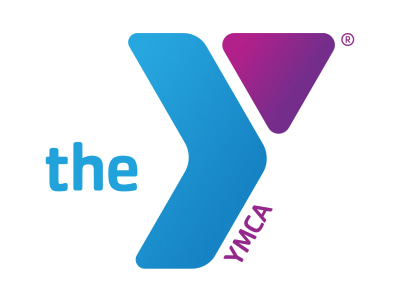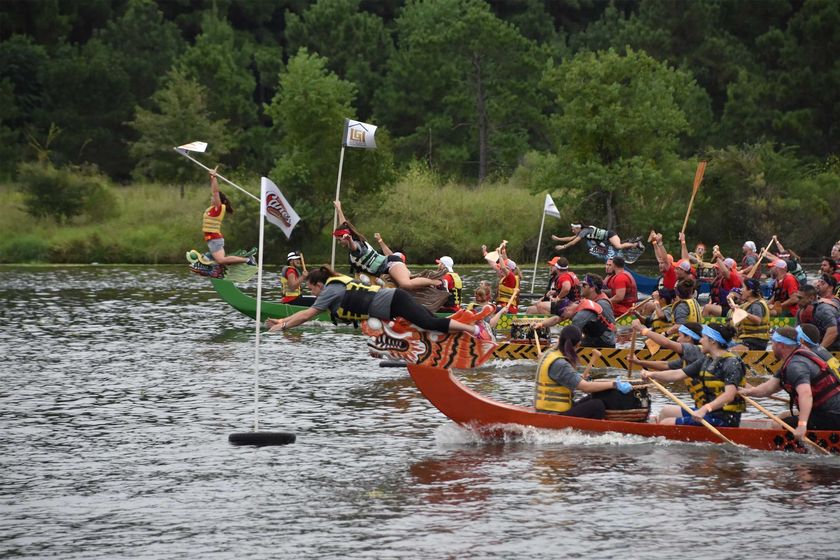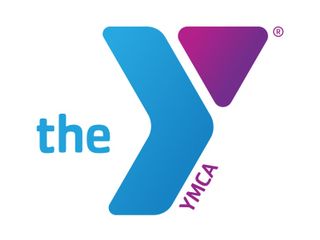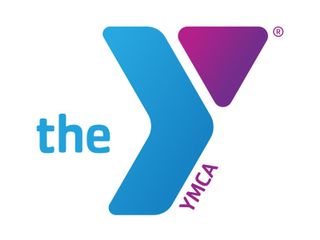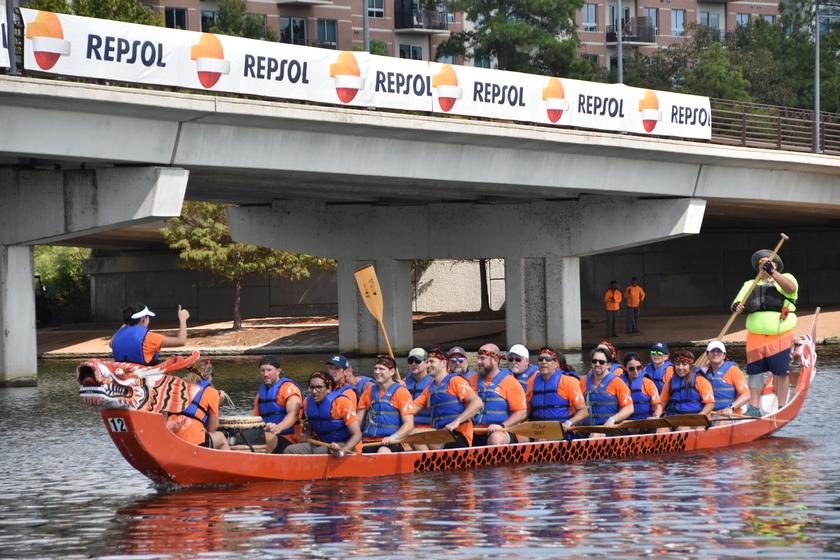- Sections :
- Crime & Public Safety
- Restaurants & Food
- Sports
- More
Categories
YMCA Firsts Series: YMCA’s Part in The Invention of the Game of Basketball
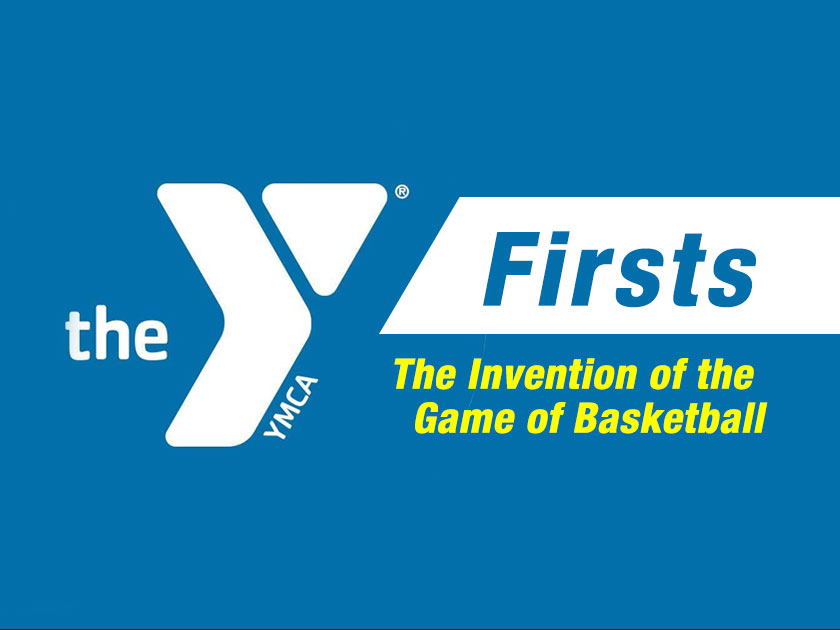
THE WOODLANDS, TX - You probably have heard of his name, James Naismith. He is noted as being the inventor of the game of basketball. What you may not have heard though is that it was his work with his local YMCA in Springfield, Massachusetts that gave him the opportunity to create the game in the first place and it was YMCAs around the country that introduced the game of basketball to the rest of the world. It’s hard to believe that a game that is played by millions of people today was created as a mere “athletic distraction” for college athletes during the winter months back in 1891. From peach baskets nailed to the wall to the National Basketball Association showcasing amazing athletes like Michael Jordan and Steph Curry, basketball has come a long way and YMCA helped make that incredible journey possible. This is just one of the many YMCA accomplishments we will be highlighting in our new series called “YMCA Firsts”, because YMCA is more than a place, it is a PURPOSE.
Who was James Naismith?
James Naismith was born in 1861, in Almonte, Canada to Scottish Immigrants. He was orphaned at the age of nine when both his parents died from typhoid fever within three weeks of each other. He was raised by his grandmother for two years before she passed away and then was raised by his aunt and uncle. After graduating from Almonte High School, he entered Montreal’s McGill University. He studied theology and physical education and excelled at sports. He eventually moved to Springfield, Massachusetts, continuing graduate work and employed as an instructor at the International YMCA Training School, which would eventually evolve into the present day Springfield College. While at school, he was tasked by Dr. Luther Gulick, the head of physical education, to develop a new athletic program to address a pending problem. That solution would turn the sports world upside-down and usher in one of the greatest sports in the world.
What prompted the desire to create the game of basketball?
The interesting thing about the sport of basketball is that basketball is the only major American sport with a clearly identifiable inventor. And that inventor was Canadian. There are questions and myths circulating about other major American sports and how they started, but it was at a small college in Springfield, Massachusetts that James Naismith was given 14 days to come up with the game of basketball. That was a tall order to fill, but fill it he did. Why did he invent the game of basketball? You have heard of the phrase “Necessity is the mother of invention”. Well, the game of basketball was the invention that filled the necessity of addressing some rowdy athletes during the school winter months.
New England was experiencing a terrible blizzard in 1891 and the extreme weather made it tough for kids to do anything outside. They were confined to indoor activities and began roughhousing in the halls. This became a real problem for the school. Naismith was a graduate student as well as an instructor at the college. The head of physical education created a class assignment to address some issues with how to keep their athletes in shape during the winter months. Per their assignment, they were to create a game that was to be played indoors, in a smaller area, that would keep the game fair and not too rough. The other students weren’t able to create a suitable game so the task eventually fell squarely in Naismith’s lap. Dr. Gulick tasked Naismith with coming up with the game and gave him about 2 weeks to do so. The core issue revolved around finding a game that athletes would actually play that was interesting and that also met the requirements of keeping them in shape. Naismith was quoted as later saying “The invention of basketball was not an accident. It was developed to meet a need. Those boys simply would not play 'Drop the Handkerchief.” Drop the Handkerchief was basically a variation of the game duck, duck, goose. Naismith took his experience in lacrosse, soccer, football, rugby and gymnastics, sat down and came up with a new game that involved peach baskets, ladders, a soccer ball and 18 players.
He is noted as writing the first set of rules for the game and there were 13 of them.
What were the original 13 rules of basketball?
The original game was a little different than what it is today. His inspiration for basketball came from a childhood game he used to play called duck-on-a-rock, a game involving throwing a small rock placed on top of a larger rock. The height of the peach basket rim was 10 foot, but that wasn’t an arbitrary number. The height was determined solely by the height of the Y’s indoor running track. The track that the baskets were nailed to. Instead of 5 players on a team, his class consisted of 18 students, so Naismith divided them into two teams of 9. There was two 15-minute halves with a 5 minute break in-between. Instead of regular rims with nets, Naismith used large peach baskets that were nailed at each end of the gym. He originally wanted to nail square boxes for the goals, but he couldn’t find ones that would work well, so he ended up using available peach baskets instead. Naismith was limited to using existing sport balls at the time and decided that the soccer ball was the most appropriate ball to use. The soccer balls were a good size and were softer than the other balls to keep the athletes from getting hurt. No holes were created in the baskets. When a player made a basket, the game was temporarily paused, a guy with a ladder would come out on the floor, climb up the ladder, retrieve the ball, climb down the ladder, remove the ladder from the floor and the game would then continue. They did this for every basket. Rims and nets weren’t used until later. In fact, it would be 10 years before rims with nets would be used. But even then, the bottom of the nets were still closed. They still were required to climb up a ladder to retrieve the ball. It wasn’t until 1906 that the bottom of the nets were cut. One would think that someone at the college would have suggested it earlier, but it took 15 years before a hole was placed in the ball receptacles. That had to have been a game changer. No more ladders to retrieve balls or pausing of the game. So whenever you feel that a game is dragging on in time, just remember how Naismith and his first games went.
Another notable item about the materials used in the game of basketball was that the soccer ball was utilized for the first three years of the game. Naismith eventually reached out to A.G. Spalding & Bros to develop a more appropriate ball for the game. They created a ball that was about 4 inches in diameter larger than a soccer ball, was wrapped in leather and weighed about 20 oz. It was in 1894 that the new and first official basketballs were used.
Not only were the materials used in the game different, but the way it was played was different. The first set of rules was simple. Just thrown the ball in to the opposing teams peach basket. That first game on December 21, 1891 didn’t work out as well as Naismith had imagined.
According to a radio interview Naismith gave in 1939 he said -
“When I was a physical instructor at Springfield College in Massachusetts. We had a real New England blizzard. Four days the students couldn't go outdoors. So they began roughhousing in the halls. We tried everything to keep them quiet. We tried playing a modified form of football in the gymnasium, but they got bored with that. Something had to be done. One day I had an idea. I called the boys to the gym, divided them up into teams of nine, and gave them an old soccer ball. I showed them to pitch them into baskets I'd nailed up at each end of the gym. I told them the idea was to throw the ball into the opposing team peach basket. I blew a whistle, and the first game of basketball began.”
He was asked what rules he had for that first game. He replied -
“Well I didn't have enough and that is where I made my big mistake. The boys began tackling kicking and punching in the clinches. They ended up in a free for all in the middle of the gym floor. Before I could pull them apart. One boy was knocked out. Several of them got black eyes and one had a dislocated shoulder. It certainly was murder. Well after their first match I was afraid they'd kill each other, but they kept nagging me to let them play again. So I made up some more rules. The most important one was that there should be no running with the ball. That stopped tackling and slugging. We tried out the game with those rules. And we didn't have one casualty. We had a fine clean sport. 10 years later, basketball was being played all over the country. And in 1936, I saw it played for the first time at the Olympic Games, and the whole thing started with a couple of peach baskets, I put up in a little gym 48 years ago”
By the way, the score for the first game was 1-0.
Here are the original 13 rules he created to keep the boys from killing each other:
1. The ball may be thrown in any direction with one or both hands.
2. The ball may be batted in any direction with one or both hands (never with the fist).
3. A player cannot run with the ball. The player must throw it from the spot on which he catches it, allowance to be made for a man who catches the ball when running at a good speed if he tries to stop.
4. The ball must be held in or between the hands; the arms or body must not be used for holding it.
5. No shouldering, holding, pushing, tripping, or striking in any way the person of an opponent shall be allowed; the first infringement of this rule by any player shall count as a foul, the second shall disqualify him until the next goal is made, or, if there was evident intent to injure the person, for the whole of the game, no substitute allowed.
6. A foul is striking at the ball with the fist, violation of Rules 3,4, and such as described in Rule 5.
7. If either side makes three consecutive fouls, it shall count a goal for the opponents (consecutive means without the opponents in the mean time making a foul).
8. A goal shall be made when the ball is thrown or batted from the grounds into the basket and stays there, providing those defending the goal do not touch or disturb the goal. If the ball rests on the edges, and the opponent moves the basket, it shall count as a goal.
9. When the ball goes out of bounds, it shall be thrown into the field of play by the person first touching it. In case of a dispute, the umpire shall throw it straight into the field. The thrower-in is allowed five seconds; if he holds it longer, it shall go to the opponent. If any side persists in delaying the game, the umpire shall call a foul on that side.
10. The umpire shall be judge of the men and shall note the fouls and notify the referee when three consecutive fouls have been made. He shall have power to disqualify men according to Rule 5.
11. The referee shall be judge of the ball and shall decide when the ball is in play, in bounds, to which side it belongs, and shall keep the time. He shall decide when a goal has been made, and keep account of the goals with any other duties that are usually performed by a referee.
12. The time shall be two 15-minute halves, with five minutes' rest between.
13. The side making the most goals in that time shall be declared the winner. In case of a draw, the game may, by agreement of the captains, be continued until another goal is made.
Was James Naismith good at the game of basketball?
James Naismith was a very good athlete. He played and excelled in various sports, but as a basketball coach, his skills were not as good. He eventually worked at the University of Kansas. He is known as the first basketball coach for that University as well as the first basketball coach in the world, but he is also known as the only losing coach for the University of Kansas with a career 55-60 record.
Other interesting facts about James Naismith and Basketball
- The name basketball was originally two words not one - Basket Ball.
- Naismith was not a US Citizen when he invented the game. He didn’t gain his US citizenship until 1925, about 14 years before his death.
- He is noted by some as being the person that developed the first football helmet.
- The first basketball used to play basketball was not a basketball but a soccer ball
- He founded a basketball program at the University of Kansas
- After leaving Springfield, he went on to get his medical degree
- Tallest basketball player to ever play the game is Sun Mingming (7 ft 9 in)
- Shortest basketball player to play the game is Muggsy Bogues (5 ft 3 in)
- Sacramento Kings is the oldest continuously operating team in the NBA.
How did the rest of the world find out about this new basketball game
The game of basketball was very popular at the International YMCA Training School and it was quickly adopted by other YMCAs around the country. In less than a year, journalists were writing about the sport and it was even requested that the game be named “Naismith Ball” in honor of James Naismith. Naismith demurred at the idea though. Before it was a professional sport, it was played in colleges.
When did the National Basketball Association Begin?
The NBA was established in 1949. It was a merger of the two previous leagues, the BAA and The NBL.
When was the Naismith Memorial Basketball Hall of Fame established?
The Naismith Memorial Basketball Hall of Fame was established in 1959 and is located in Springfield, Massachusetts. The following is a list of the inductees for the inauguration year of the hall of fame -
* Original Celtics, Team
* The First Team, Team
* Phog Allen, Coach
* Henry Clifford Carlson, Coach
* Luther Gulick, Contributor
* Edward Hickox, Contributor
* Charles Hyatt, Player
* Matthew Kennedy, Referee
* Hank Luisetti, Player
* Walter Meanwell, Coach
* George Mikan, Player
* Ralph Morgan, Contributor|
* James Naismith, Contributor
* Harold Olsen, Contributor
* John Schommer, Player
* Amos Alonzo Stagg, Contributor
* Oswald Tower, Contributor
Tour The Naismith Basketball Hall of Fame
The game of basketball is an amazing game. It is listed as the second most popular sport in the world. What is interesting though is that the person that invented the game of basketball didn’t consider basketball to be his favorite sport. Naismith thought gymnastics and wrestling provided better physical education for boys. The game of basketball was first played at the Olympics in 1936, three years before Naismith’s death.
About the local Woodlands area YMCAs
The YMCA has been a vital part of South Montgomery County for over thirty five years. The YMCA is the leading provider of family-oriented fitness and recreation in this community and serves as a hub of community activity, providing physical, recreational, social and educational programs and services for all ages. The YMCA serves over 40,000 people annually. In a time of increasing family fragmentation, the YMCA is committed to enriching family life and strengthening the quality of life for those in our service area.
The YMCA's programs are 'mission-driven' and give full meaning to helping people grow in spirit, mind and body. The Y is a cause-driven organization that is for youth development, for healthy living and for social responsibility. A strong community can only be achieved when we invest in our kids, our health and our neighbors.
The Y is community-centered listening and responding to our communities throughout the Greater Houston Area. The Y brings people together. All ages and backgrounds connect to bridge the gaps in community needs. The Y nurtures potential. We believe that everyone should have the opportunity to learn, grow and thrive. The Y has local presence and global reach. We mobilize local communities to effect lasting, meaningful change.
Click here to learn more about basketball programs at YMCA
For more information on Youth and Adult Sports programs, available for ages 3 – Adult, contact jonathan.mclean@ymcahouston.org or call 281-367-YMCA.
“The interesting thing about the sport of basketball is that basketball is the only major American sport with a clearly identifiable inventor.'
Who was James Naismith?
James Naismith was born in 1861, in Almonte, Canada to Scottish Immigrants. He was orphaned at the age of nine when both his parents died from typhoid fever within three weeks of each other. He was raised by his grandmother for two years before she passed away and then was raised by his aunt and uncle. After graduating from Almonte High School, he entered Montreal’s McGill University. He studied theology and physical education and excelled at sports. He eventually moved to Springfield, Massachusetts, continuing graduate work and employed as an instructor at the International YMCA Training School, which would eventually evolve into the present day Springfield College. While at school, he was tasked by Dr. Luther Gulick, the head of physical education, to develop a new athletic program to address a pending problem. That solution would turn the sports world upside-down and usher in one of the greatest sports in the world.
What prompted the desire to create the game of basketball?
The interesting thing about the sport of basketball is that basketball is the only major American sport with a clearly identifiable inventor. And that inventor was Canadian. There are questions and myths circulating about other major American sports and how they started, but it was at a small college in Springfield, Massachusetts that James Naismith was given 14 days to come up with the game of basketball. That was a tall order to fill, but fill it he did. Why did he invent the game of basketball? You have heard of the phrase “Necessity is the mother of invention”. Well, the game of basketball was the invention that filled the necessity of addressing some rowdy athletes during the school winter months.
New England was experiencing a terrible blizzard in 1891 and the extreme weather made it tough for kids to do anything outside. They were confined to indoor activities and began roughhousing in the halls. This became a real problem for the school. Naismith was a graduate student as well as an instructor at the college. The head of physical education created a class assignment to address some issues with how to keep their athletes in shape during the winter months. Per their assignment, they were to create a game that was to be played indoors, in a smaller area, that would keep the game fair and not too rough. The other students weren’t able to create a suitable game so the task eventually fell squarely in Naismith’s lap. Dr. Gulick tasked Naismith with coming up with the game and gave him about 2 weeks to do so. The core issue revolved around finding a game that athletes would actually play that was interesting and that also met the requirements of keeping them in shape. Naismith was quoted as later saying “The invention of basketball was not an accident. It was developed to meet a need. Those boys simply would not play 'Drop the Handkerchief.” Drop the Handkerchief was basically a variation of the game duck, duck, goose. Naismith took his experience in lacrosse, soccer, football, rugby and gymnastics, sat down and came up with a new game that involved peach baskets, ladders, a soccer ball and 18 players.
He is noted as writing the first set of rules for the game and there were 13 of them.
What were the original 13 rules of basketball?
The original game was a little different than what it is today. His inspiration for basketball came from a childhood game he used to play called duck-on-a-rock, a game involving throwing a small rock placed on top of a larger rock. The height of the peach basket rim was 10 foot, but that wasn’t an arbitrary number. The height was determined solely by the height of the Y’s indoor running track. The track that the baskets were nailed to. Instead of 5 players on a team, his class consisted of 18 students, so Naismith divided them into two teams of 9. There was two 15-minute halves with a 5 minute break in-between. Instead of regular rims with nets, Naismith used large peach baskets that were nailed at each end of the gym. He originally wanted to nail square boxes for the goals, but he couldn’t find ones that would work well, so he ended up using available peach baskets instead. Naismith was limited to using existing sport balls at the time and decided that the soccer ball was the most appropriate ball to use. The soccer balls were a good size and were softer than the other balls to keep the athletes from getting hurt. No holes were created in the baskets. When a player made a basket, the game was temporarily paused, a guy with a ladder would come out on the floor, climb up the ladder, retrieve the ball, climb down the ladder, remove the ladder from the floor and the game would then continue. They did this for every basket. Rims and nets weren’t used until later. In fact, it would be 10 years before rims with nets would be used. But even then, the bottom of the nets were still closed. They still were required to climb up a ladder to retrieve the ball. It wasn’t until 1906 that the bottom of the nets were cut. One would think that someone at the college would have suggested it earlier, but it took 15 years before a hole was placed in the ball receptacles. That had to have been a game changer. No more ladders to retrieve balls or pausing of the game. So whenever you feel that a game is dragging on in time, just remember how Naismith and his first games went.
Another notable item about the materials used in the game of basketball was that the soccer ball was utilized for the first three years of the game. Naismith eventually reached out to A.G. Spalding & Bros to develop a more appropriate ball for the game. They created a ball that was about 4 inches in diameter larger than a soccer ball, was wrapped in leather and weighed about 20 oz. It was in 1894 that the new and first official basketballs were used.
Not only were the materials used in the game different, but the way it was played was different. The first set of rules was simple. Just thrown the ball in to the opposing teams peach basket. That first game on December 21, 1891 didn’t work out as well as Naismith had imagined.
According to a radio interview Naismith gave in 1939 he said -
“When I was a physical instructor at Springfield College in Massachusetts. We had a real New England blizzard. Four days the students couldn't go outdoors. So they began roughhousing in the halls. We tried everything to keep them quiet. We tried playing a modified form of football in the gymnasium, but they got bored with that. Something had to be done. One day I had an idea. I called the boys to the gym, divided them up into teams of nine, and gave them an old soccer ball. I showed them to pitch them into baskets I'd nailed up at each end of the gym. I told them the idea was to throw the ball into the opposing team peach basket. I blew a whistle, and the first game of basketball began.”
He was asked what rules he had for that first game. He replied -
“Well I didn't have enough and that is where I made my big mistake. The boys began tackling kicking and punching in the clinches. They ended up in a free for all in the middle of the gym floor. Before I could pull them apart. One boy was knocked out. Several of them got black eyes and one had a dislocated shoulder. It certainly was murder. Well after their first match I was afraid they'd kill each other, but they kept nagging me to let them play again. So I made up some more rules. The most important one was that there should be no running with the ball. That stopped tackling and slugging. We tried out the game with those rules. And we didn't have one casualty. We had a fine clean sport. 10 years later, basketball was being played all over the country. And in 1936, I saw it played for the first time at the Olympic Games, and the whole thing started with a couple of peach baskets, I put up in a little gym 48 years ago”
By the way, the score for the first game was 1-0.
Here are the original 13 rules he created to keep the boys from killing each other:
1. The ball may be thrown in any direction with one or both hands.
2. The ball may be batted in any direction with one or both hands (never with the fist).
3. A player cannot run with the ball. The player must throw it from the spot on which he catches it, allowance to be made for a man who catches the ball when running at a good speed if he tries to stop.
4. The ball must be held in or between the hands; the arms or body must not be used for holding it.
5. No shouldering, holding, pushing, tripping, or striking in any way the person of an opponent shall be allowed; the first infringement of this rule by any player shall count as a foul, the second shall disqualify him until the next goal is made, or, if there was evident intent to injure the person, for the whole of the game, no substitute allowed.
6. A foul is striking at the ball with the fist, violation of Rules 3,4, and such as described in Rule 5.
7. If either side makes three consecutive fouls, it shall count a goal for the opponents (consecutive means without the opponents in the mean time making a foul).
8. A goal shall be made when the ball is thrown or batted from the grounds into the basket and stays there, providing those defending the goal do not touch or disturb the goal. If the ball rests on the edges, and the opponent moves the basket, it shall count as a goal.
9. When the ball goes out of bounds, it shall be thrown into the field of play by the person first touching it. In case of a dispute, the umpire shall throw it straight into the field. The thrower-in is allowed five seconds; if he holds it longer, it shall go to the opponent. If any side persists in delaying the game, the umpire shall call a foul on that side.
10. The umpire shall be judge of the men and shall note the fouls and notify the referee when three consecutive fouls have been made. He shall have power to disqualify men according to Rule 5.
11. The referee shall be judge of the ball and shall decide when the ball is in play, in bounds, to which side it belongs, and shall keep the time. He shall decide when a goal has been made, and keep account of the goals with any other duties that are usually performed by a referee.
12. The time shall be two 15-minute halves, with five minutes' rest between.
13. The side making the most goals in that time shall be declared the winner. In case of a draw, the game may, by agreement of the captains, be continued until another goal is made.
Was James Naismith good at the game of basketball?
James Naismith was a very good athlete. He played and excelled in various sports, but as a basketball coach, his skills were not as good. He eventually worked at the University of Kansas. He is known as the first basketball coach for that University as well as the first basketball coach in the world, but he is also known as the only losing coach for the University of Kansas with a career 55-60 record.
Other interesting facts about James Naismith and Basketball
- The name basketball was originally two words not one - Basket Ball.
- Naismith was not a US Citizen when he invented the game. He didn’t gain his US citizenship until 1925, about 14 years before his death.
- He is noted by some as being the person that developed the first football helmet.
- The first basketball used to play basketball was not a basketball but a soccer ball
- He founded a basketball program at the University of Kansas
- After leaving Springfield, he went on to get his medical degree
- Tallest basketball player to ever play the game is Sun Mingming (7 ft 9 in)
- Shortest basketball player to play the game is Muggsy Bogues (5 ft 3 in)
- Sacramento Kings is the oldest continuously operating team in the NBA.
How did the rest of the world find out about this new basketball game
The game of basketball was very popular at the International YMCA Training School and it was quickly adopted by other YMCAs around the country. In less than a year, journalists were writing about the sport and it was even requested that the game be named “Naismith Ball” in honor of James Naismith. Naismith demurred at the idea though. Before it was a professional sport, it was played in colleges.
When did the National Basketball Association Begin?
The NBA was established in 1949. It was a merger of the two previous leagues, the BAA and The NBL.
When was the Naismith Memorial Basketball Hall of Fame established?
The Naismith Memorial Basketball Hall of Fame was established in 1959 and is located in Springfield, Massachusetts. The following is a list of the inductees for the inauguration year of the hall of fame -
* Original Celtics, Team
* The First Team, Team
* Phog Allen, Coach
* Henry Clifford Carlson, Coach
* Luther Gulick, Contributor
* Edward Hickox, Contributor
* Charles Hyatt, Player
* Matthew Kennedy, Referee
* Hank Luisetti, Player
* Walter Meanwell, Coach
* George Mikan, Player
* Ralph Morgan, Contributor|
* James Naismith, Contributor
* Harold Olsen, Contributor
* John Schommer, Player
* Amos Alonzo Stagg, Contributor
* Oswald Tower, Contributor
Tour The Naismith Basketball Hall of Fame
The game of basketball is an amazing game. It is listed as the second most popular sport in the world. What is interesting though is that the person that invented the game of basketball didn’t consider basketball to be his favorite sport. Naismith thought gymnastics and wrestling provided better physical education for boys. The game of basketball was first played at the Olympics in 1936, three years before Naismith’s death.
About the local Woodlands area YMCAs
The YMCA has been a vital part of South Montgomery County for over thirty five years. The YMCA is the leading provider of family-oriented fitness and recreation in this community and serves as a hub of community activity, providing physical, recreational, social and educational programs and services for all ages. The YMCA serves over 40,000 people annually. In a time of increasing family fragmentation, the YMCA is committed to enriching family life and strengthening the quality of life for those in our service area.
The YMCA's programs are 'mission-driven' and give full meaning to helping people grow in spirit, mind and body. The Y is a cause-driven organization that is for youth development, for healthy living and for social responsibility. A strong community can only be achieved when we invest in our kids, our health and our neighbors.
The Y is community-centered listening and responding to our communities throughout the Greater Houston Area. The Y brings people together. All ages and backgrounds connect to bridge the gaps in community needs. The Y nurtures potential. We believe that everyone should have the opportunity to learn, grow and thrive. The Y has local presence and global reach. We mobilize local communities to effect lasting, meaningful change.
Click here to learn more about basketball programs at YMCA
For more information on Youth and Adult Sports programs, available for ages 3 – Adult, contact jonathan.mclean@ymcahouston.org or call 281-367-YMCA.
Comments •

